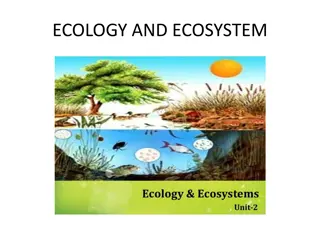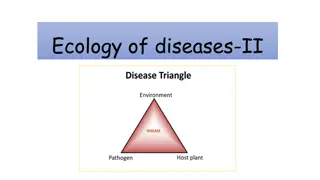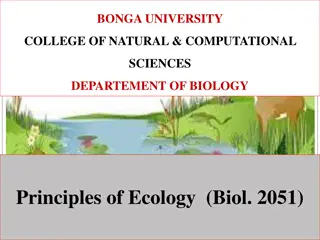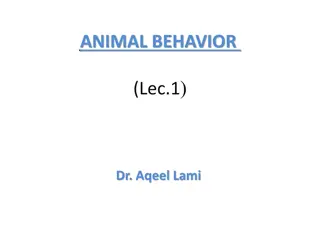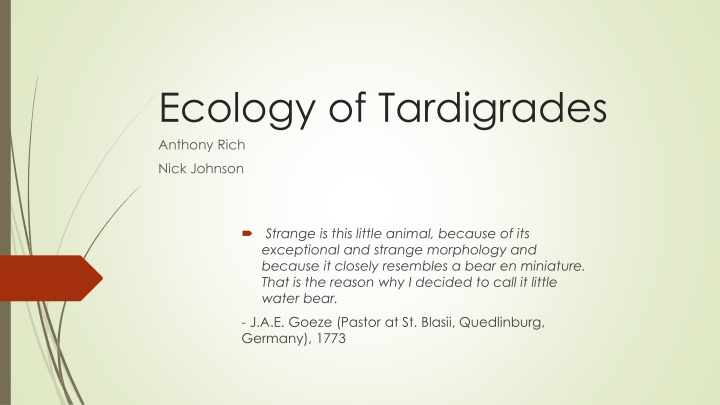
Intriguing Ecology of Tardigrades: Little Water Bears with Exceptional Abilities
Tardigrades, often called "little water bears," are fascinating micro-animals found in diverse environments worldwide, from mountaintops to deep sea and even outer space. They exhibit incredible survival abilities through cryptobiosis and can withstand extreme conditions. While some are herbivorous or feed on bacteria, others may display carnivorous or cannibalistic behaviors. Tardigrades play a crucial role as pioneer species, adapting to new environments and contributing to ecosystem dynamics.
Download Presentation

Please find below an Image/Link to download the presentation.
The content on the website is provided AS IS for your information and personal use only. It may not be sold, licensed, or shared on other websites without obtaining consent from the author. If you encounter any issues during the download, it is possible that the publisher has removed the file from their server.
You are allowed to download the files provided on this website for personal or commercial use, subject to the condition that they are used lawfully. All files are the property of their respective owners.
The content on the website is provided AS IS for your information and personal use only. It may not be sold, licensed, or shared on other websites without obtaining consent from the author.
E N D
Presentation Transcript
Ecology of Tardigrades Anthony Rich Nick Johnson Strange is this little animal, because of its exceptional and strange morphology and because it closely resembles a bear en miniature. That is the reason why I decided to call it little water bear. - J.A.E. Goeze (Pastor at St. Blasii, Quedlinburg, Germany), 1773
Tardigrades are Found Everywhere Tardigrades can be found in almost every environment on the planet Mountaintops Deep sea Rain forests Antarctica Also can be found on all types of mediums Lichens Mosses Sand dunes Soil Sediments Leaf litter Outer space (not natural habitat) http://blogs.unimelb.edu.au/sciencecommunication/2013/10/22/ george-clooney-should-have-beared-all/
Similarities/Differences Tardigrades are aquatic or semi-aquatic Need water to surround them to perform gas exchange Can be found where ever there is moisture All tardigrades can with stand extreme environments Process of cryptobiosis Metabolism shuts down and they lose all water in their bodies. Practically death Not all tardigrades eat the same things Most are phytophagous or bacteriophages Can be carnivorous towards smaller tardigrades Cannibalistic https://www.pinterest.com/myravery/tardig rades/
Benefits of Tardigrades Tardigrades pave the way They are a pioneer species by inhabiting new environments Tardigrades are prey to multiple organisms https://archaeologynewsnetwork.blogspot.com/2011/09/deep-oceans-can- mask-global-warming-for.html#8sEf0oxbOgzKxb0u.97
Sources Brent Nichols, Phillip (2005). Tardigrade Evolution and Ecology (Ph.D.). University of Florida Lindahl, K. (2008-03-15). "Tardigrade Facts". Morgan, Clive I. (1977). "Population dynamics of two species of Tardigrada, Macrobiotus hufelandii (Schultze) and Echiniscus (Echiniscus) testudo (Doyere), in roof moss from Swansea". Journal of Animal Ecology. British Ecological Society. 46 (1): 263 279. JSTOR 3960. doi:10.2307/3960.




